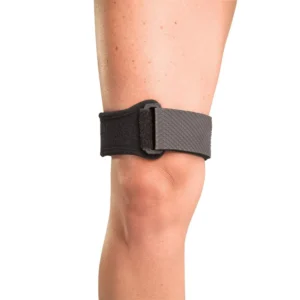Bike Setup
Updated:
Ensuring that your bike is correctly setup and properly adjusted for your particular body shape and size is extremely important to minimise stress on the body and remain injury free whilst cycling. Furthermore, a correct bike setup will enhance your cycling performance, promote comfort, and, allow you to ride longer distances with less effort.
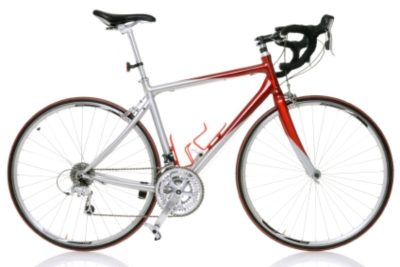
Common Cycling Injuries
Areas of the body which are particularly prone to overuse cycling injuries, most of which can be attributed to incorrect or poor bike setup, include the knees, lower back, upper back and neck. Some of the more common overuse cycling injuries include:
- Patellofemoral Pain Syndrome
- ITB Friction Syndrome
- Quadriceps Tendonitis
- Patella Tendonitis
- Lumbar Disc Bulge
- Thoracic Disc Bulge
- Cervical Disc Bulge
- Cervical Joint Sprain
- Headaches
- Carpal Tunnel Syndrome
Other common cycling injuries which may occur traumatically, due to a collision or fall from a bike, include:
- Clavicle Fracture
- Humeral Fracture
- AC Joint Sprain
- Rotator Cuff Tear
- Dislocated Shoulder
- Labral Tear of the Shoulder
- Radius Fracture
- Ulnar Fracture
- Scaphoid Fracture
- Sprained Wrist
Many overuse cycling injuries can be prevented (or successfully managed) by ensuring a correct bike setup for riding. Correct bike setup may also help to minimise the likelihood of traumatic cycling injuries by improving stability and therefore reducing the risk of falls or collisions.
-
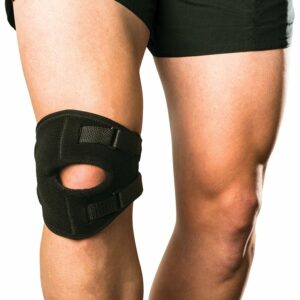 AllCare Ortho Patella Tracker (AOK28)Original price was: $66.00.$55.00Current price is: $55.00.
AllCare Ortho Patella Tracker (AOK28)Original price was: $66.00.$55.00Current price is: $55.00. -
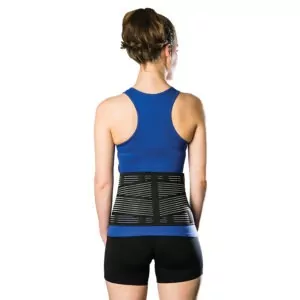 AllCare Ortho Light Back Support$59.95
AllCare Ortho Light Back Support$59.95 -
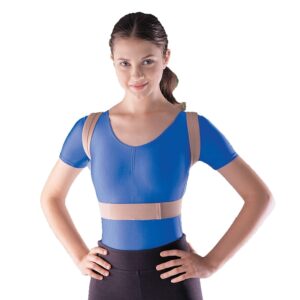 OPPO – Posture Aid / Clavicle Brace (OPP2075)$45.00
OPPO – Posture Aid / Clavicle Brace (OPP2075)$45.00 -
 Premium Strapping Tape 38mm (Victor)$16.00 – $295.00
Premium Strapping Tape 38mm (Victor)$16.00 – $295.00 -
 Pro-Tec Patella Tendon Strap$38.50
Pro-Tec Patella Tendon Strap$38.50 -
 AllCare Foam Roller Round$39.50 – $66.50
AllCare Foam Roller Round$39.50 – $66.50
Bike Setup & Injury Prevention Tips for Cyclists
Saddle Height
Ensure the saddle (or ‘seat’) height is not set too low. If it is set too low, this puts an increased load through the knees, and in particular, the knee cap. Ideally the seat height should be set so that the knee angle is flexed to approximately 15 degrees (i.e. the knee is only slightly bent) at the bottom of the pedalling motion (i.e. when the peddles are aligned with the ‘seat tube’ with the bottom peddle at ‘Bottom Dead Centre’ – i.e. the “straight” leg position on a bike). This means that the knee remains just slightly bent at this most extended position. At maximum knee bend (i.e. the top pedal position ‘Top Dead Centre’) the knee should be flexed to approximately 110-115 degrees.
Saddle Position
Ensure the saddle position is not too far forwards. Ideally during the downward phase of the pedalling motion the knee should remain vertically in line with the pedal. If the seat is set too far forward, the knee will move too far forward over the ankle during the downward phase thereby placing increased load through the knee cap, increasing the risk of overuse injury, and, reducing the overall leg efficiency.
Seat Angle
Ensure the seat angle is comfortable and does not put excessive pressure on the saddle region. Ideally, the top surface of the seat should be parallel with the road surface. A spirit level should be used to ensure your seat is level.
Posture Length
Ensure that the handle bars are not too far away or too close to the saddle. If they are positioned too close, this will place the spine into a flexed (bent) position, therefore putting greater strain on the lower back, upper back and neck. If the handle bars are too far away or too low, this can increase muscle tension in the shoulders and neck and result in neck pain, headaches and shoulder tension. Make sure the handle bars are the right distance and height so that you feel comfortable and can easily control the bike. The shoulder muscles (upper traps) should be relaxed, hands should not be gripping excessively, and the elbows should be bent just slightly.
More Bike Setup & Injury Prevention Tips for Cyclists

Members Only ContentBecome a PhysioAdvisor Member to gain full access to this exclusive content. For more details see Become a Member. Already a member? Login Now
 Physiotherapy Products to assist with some common cycling injuries
Physiotherapy Products to assist with some common cycling injuries
To purchase physiotherapy products to assist with some cycling injuries related to poor bike setup click on one of the above links or visit the PhysioAdvisor Shop.
 Find a Physio
Find a Physio
Find a physiotherapist in your local area who can assist with ensuring you have a correct bike setup to minimise the likelihood of cycling injuries.
Become a PhysioAdvisor Member

Link to this Page
If you would like to link to this article on your website, simply copy the code below and add it to your page:
<a href="https://physioadvisor.com.au/health/sport-specific/bike-setup”>Bike Setup – PhysioAdvisor.com</a><br/>Ensuring that your bike is correctly setup and properly adjusted for your particular body shape and size is extremely important to minimise stress on the body and remain injury free whilst cycling. Furthermore, a correct bike setup will enhance your cycling performance, promote comfort, and, allow you to ride longer distances with less effort.
Return to the top of Bike Setup.

